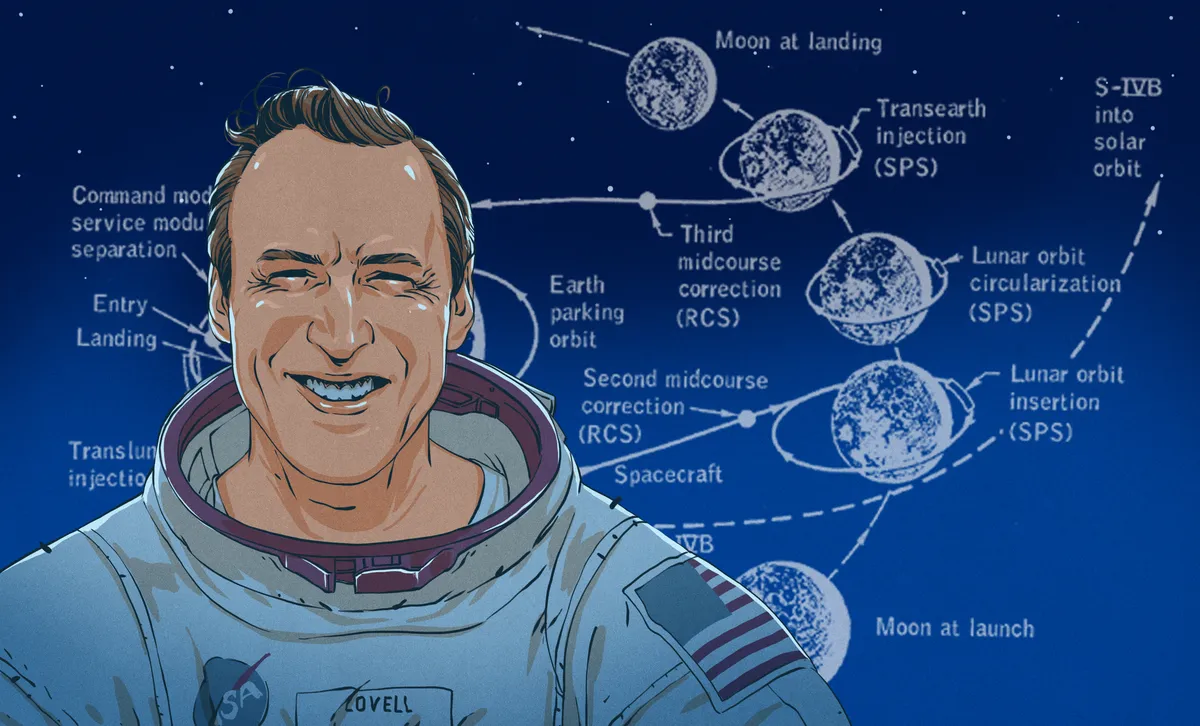
Throughout history, many individuals have faced the specter of death and emerged to share their remarkable stories. Few tales, however, capture the imagination quite like that of the Apollo 13 moon mission. Commanded by James “Jim” Lovell, the Apollo 13 crew found themselves stranded in the vast emptiness of space, far from Earth, in a severely damaged spacecraft—a scenario with seemingly no hope for rescue. Yet, against all odds, Lovell and his crew returned safely, captivating millions who tuned in to the live broadcast on April 17, 1970, as their capsule safely splashed down on Earth.
James Lovell, like many NASA astronauts, began his career as a test pilot. He graduated from the U.S. Naval Academy in Maryland and served in the U.S. Navy as a mechanical engineer and flight instructor before being selected as a NASA astronaut. Lovell passed away at the age of 97 on August 7, 2025, at his home in Illinois, leaving behind a legacy marked by his extraordinary experiences in space.
Born on March 25, 1928, in Cleveland, Ohio, James Arthur Lovell Jr. was raised as an only child after his father's tragic death in a car accident when he was just five years old. Following this event, Lovell and his mother moved in with relatives in Indiana before eventually settling in Wisconsin, where he attended Juneau High School. His early interests included rocketry, and he earned the esteemed rank of Eagle Scout in the Boy Scouts.
Upon graduating high school, Lovell joined the U.S. Navy’s Flying Midshipman program, a rigorous training initiative designed to prepare new naval aviators. This program required students to enlist as Apprentice Seamen and commit to five years of service, including one year of active duty. As the program was scaled back after World War II, Lovell transferred to the U.S. Naval Academy in Annapolis, Maryland, where he earned a Bachelor of Science degree in engineering in the spring of 1952. Commissioned as an ensign in the U.S. Navy, Lovell underwent naval aviation training and was assigned to the USS Shangri-La, an Essex-class aircraft carrier, where he completed over 100 carrier landings.
With NASA selecting astronauts primarily from the military's test pilots, Lovell's impressive track record made him a strong candidate for the pioneering group of astronauts. Although he narrowly missed being part of the Mercury Seven, Lovell applied for the second astronaut group and was selected for the successor project, Project Gemini. He flew on two Gemini missions—Gemini 7 and Gemini 12—where he worked alongside fellow astronaut Edwin “Buzz” Aldrin. During Gemini 12, Lovell and Aldrin conducted significant extra-vehicular activities (EVAs), which proved vital for the success of the subsequent Apollo missions.
Lovell is perhaps best known for his role in the Apollo 13 mission, which launched on April 11, 1970. Initially perceived as a routine mission following two successful moon landings, Apollo 13 quickly turned into a life-or-death scenario when an oxygen tank exploded approximately 330,000 kilometers from Earth. This catastrophic failure resulted in the loss of power and life-support systems, leaving Lovell and his crew—John Swigert and Fred Haise—stranded in space.
After the explosion, Lovell famously communicated with mission control, stating, “Houston, we have had a problem.” The astronauts had to rapidly devise a plan to use the Lunar Module as a lifeboat while navigating a course back to Earth. With dwindling supplies of potable water and rising carbon dioxide levels, the crew faced immense challenges. They ingeniously adapted carbon dioxide scrubbers from the Command Module to ensure their survival on the journey home.
Despite facing extreme conditions, including freezing temperatures and limited resources, the Apollo 13 crew successfully executed their re-entry procedures and splashed down safely on April 17, 1970. This mission, often labeled a "successful failure," showcased the resilience and ingenuity of the astronauts and mission control, securing Lovell's place in space exploration history.
After retiring from the Navy and NASA on March 1, 1973, Lovell transitioned to various executive roles in the private sector, including serving as CEO and president for several companies. His involvement in the Apollo 13 mission kept him in the public eye, leading to numerous documentaries and films, including the acclaimed 1995 movie, Apollo 13, based on his book, Lost Moon.
James Lovell's remarkable journey exemplifies the extraordinary human spirit when faced with adversity. As the last surviving member of the Apollo 13 crew, Lovell's legacy reminds us of the importance of teamwork and the unpredictable nature of luck. His story serves as an enduring testament to the challenges and triumphs of space exploration, inspiring generations to reach for the stars.